Defined by a gigantic timber frame, the Nanyang Technological University (NTU) Business School embodies the elegance of Toyo Ito’s architecture as well as the know-how of a cutting-edge engineering school. This competition-winning scheme is the Tokyo architect and Pritzker Prize–winner’s latest addition to the Singapore campus, where he previously built student dormitories, a gymnasium, and a small restaurant. While the new building’s gently arching form embraces the school’s historic setting, its environmentally sensitive construction points the way to the future.
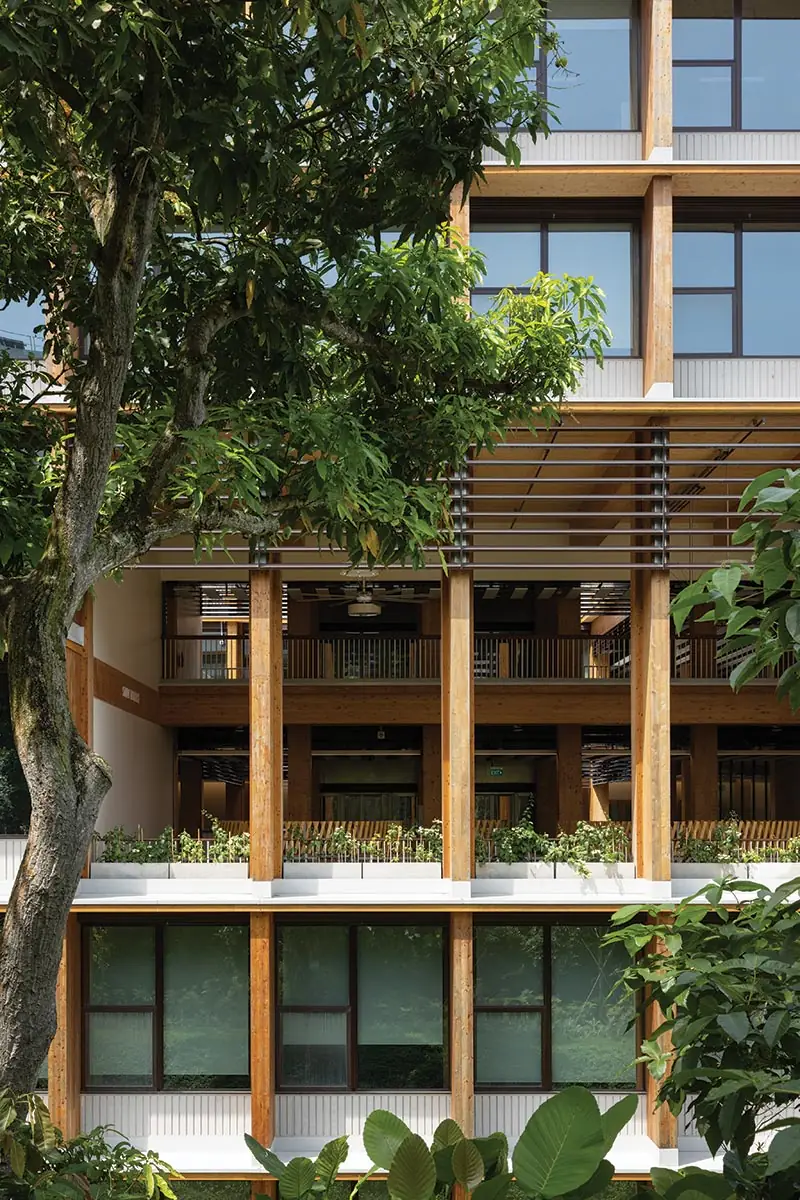
The facade is open to the elements (above and top of page). Photo © Kai Nakamura, click to enlarge.
The 437,000-square-foot edifice occupies a key location adjacent to the school’s first building, the Chinese Heritage Center fronting the 22-acre Yunnan Garden—both built in 1955 when NTU’s predecessor, Nanyang University, opened. Although the Chinese Heritage Center informed the height of Ito’s building (out of respect for this campus landmark the new structure could not exceed 98 feet), the garden’s orthogonal layout fixed its placement. “We don’t usually favor a rigid grid or sharp lines in the landscape,” comments Ito. Instead, he anchored his curved building by aligning its center—marked by a covered main entrance on one side and an outdoor amphitheater on the other—with an octagonal pavilion at the southwestern end of the garden.
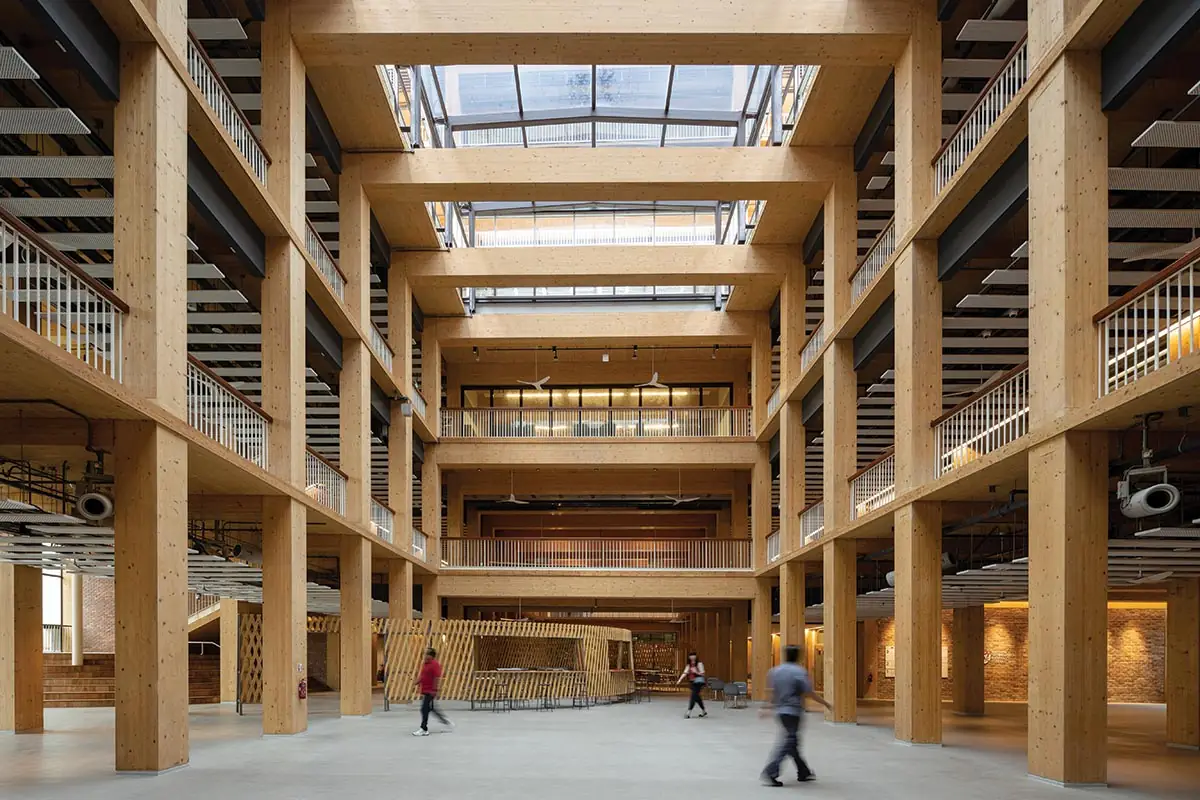
1
A central space (1) is three-stories tall, while lattice walls curve to shape smaller study nooks (2 & 3). Photos © Kai Nakamura
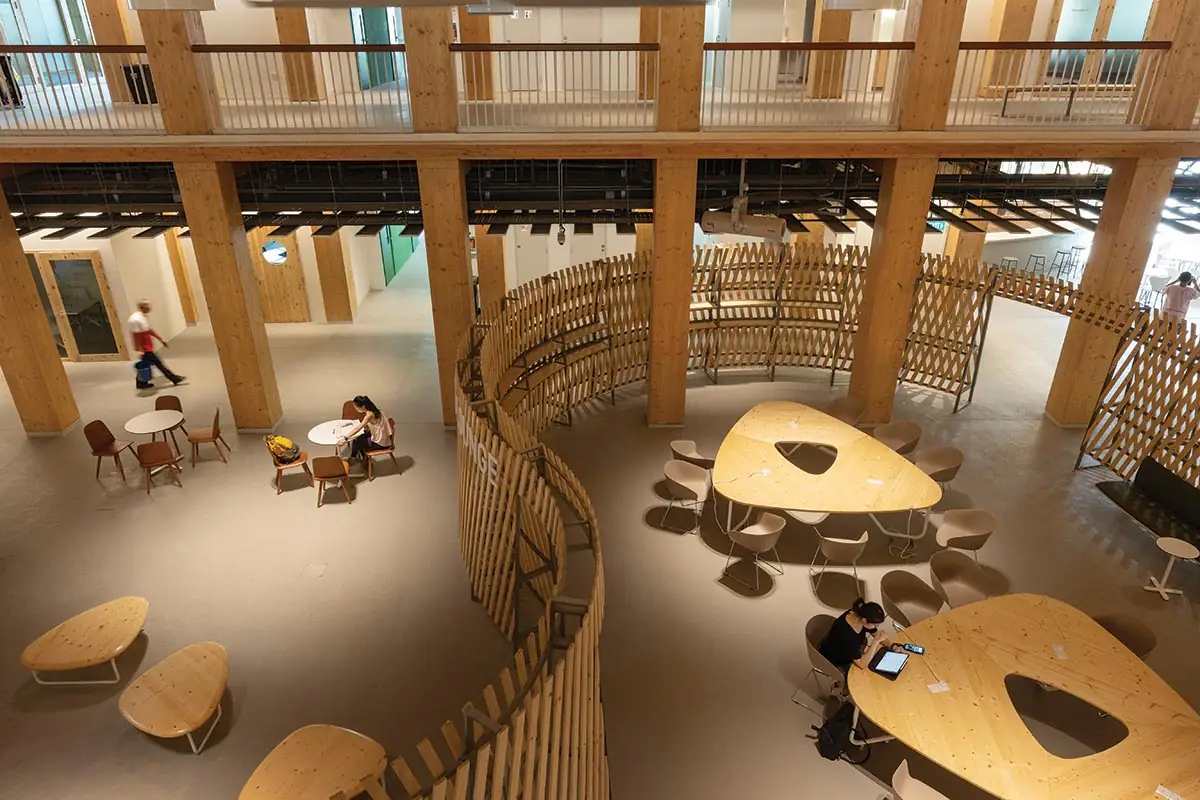
2
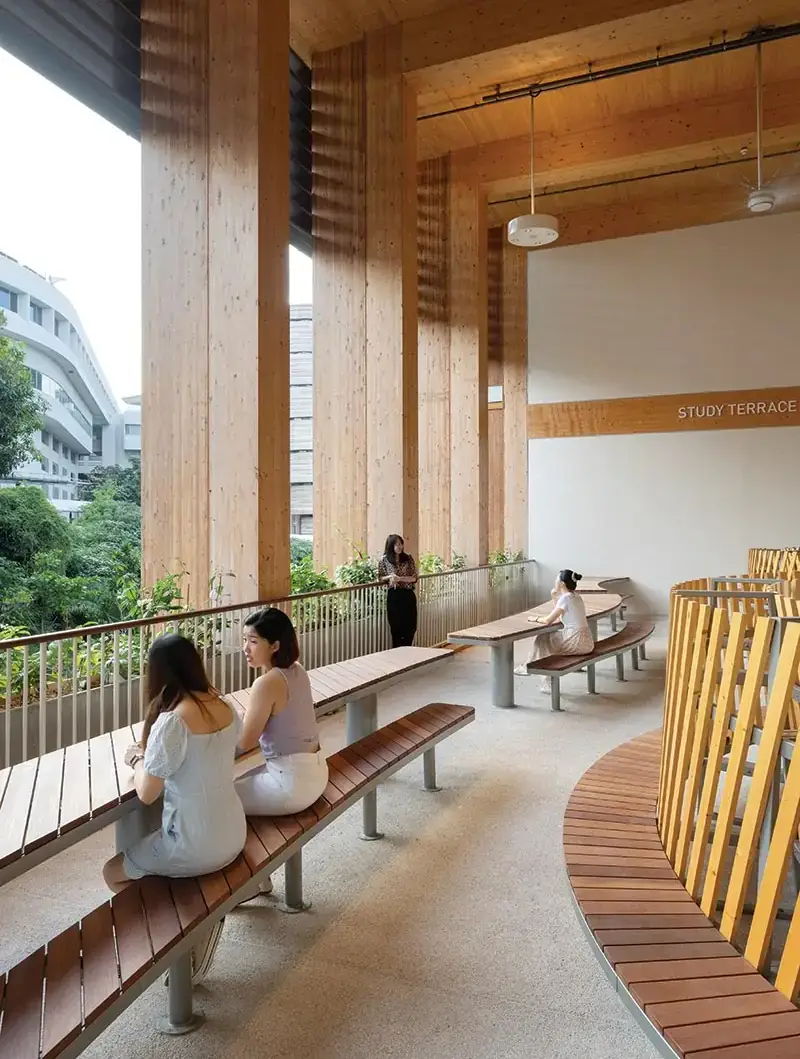
3
As security is not a big concern in Singapore, the campus is very open to the city. Similarly, the building can be accessed at multiple points. In addition to the main entrance, secondary doors are located at the south end, which is easily accessed from a nearby bus stop, and at the north end, which connects to a network of campus walkways. “People move through the building as naturally as the wind,” observes project architect Julia Li. Inside, the undergraduate department is concentrated in one half and the graduate department in the other, with a shared triple-height event space where the two meet.
The six-story building is further unified by the interior’s straightforward logic. In cross section, it consists of three 38-foot-wide layers with two 16-foot-wide circulation conduits between them—this organization runs the entire length of the 689-foot building. The two outer layers house academic spaces, with teaching areas—such as seminar rooms, meeting rooms, and lecture halls—on the first three floors, and faculty offices plus research facilities on the top three floors. The middle layer was conceived as an open space that facilitates communication and binds the programmatic components. On the lower three levels, it incorporates lounges, auditoria, and enclosed courtyards. Upstairs, this central spine opens to the sky, becoming a stepped outdoor roofscape dotted with planted terraces. Around it, “the faculty area is kind of like a village,” explains Ito. Resembling a manmade valley, this formation enables an exterior exposure for every office. The amiable coexistence with the outdoor environment, including daylight, greenery, and airflow, is a quintessential feature of Ito’s architecture.
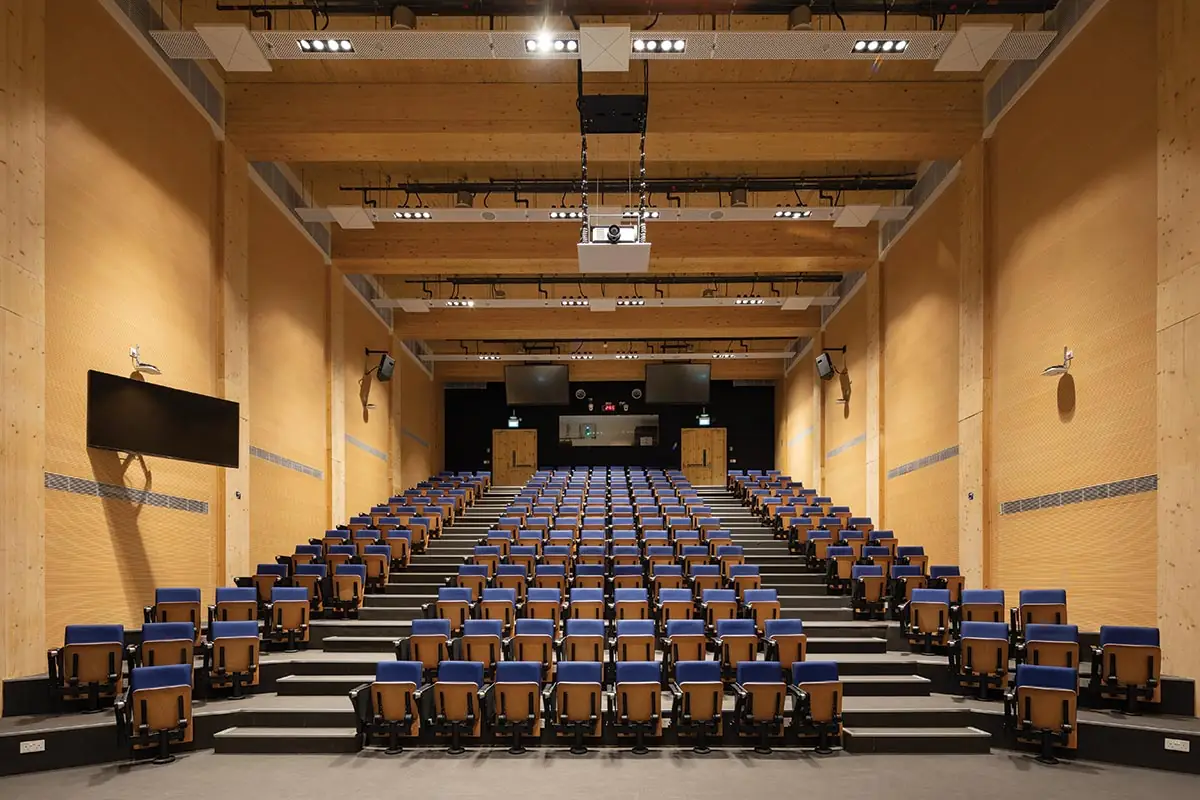
4
Timber elements carry through to the auditoria (4) and classrooms (5). Photos © Kai Nakamura
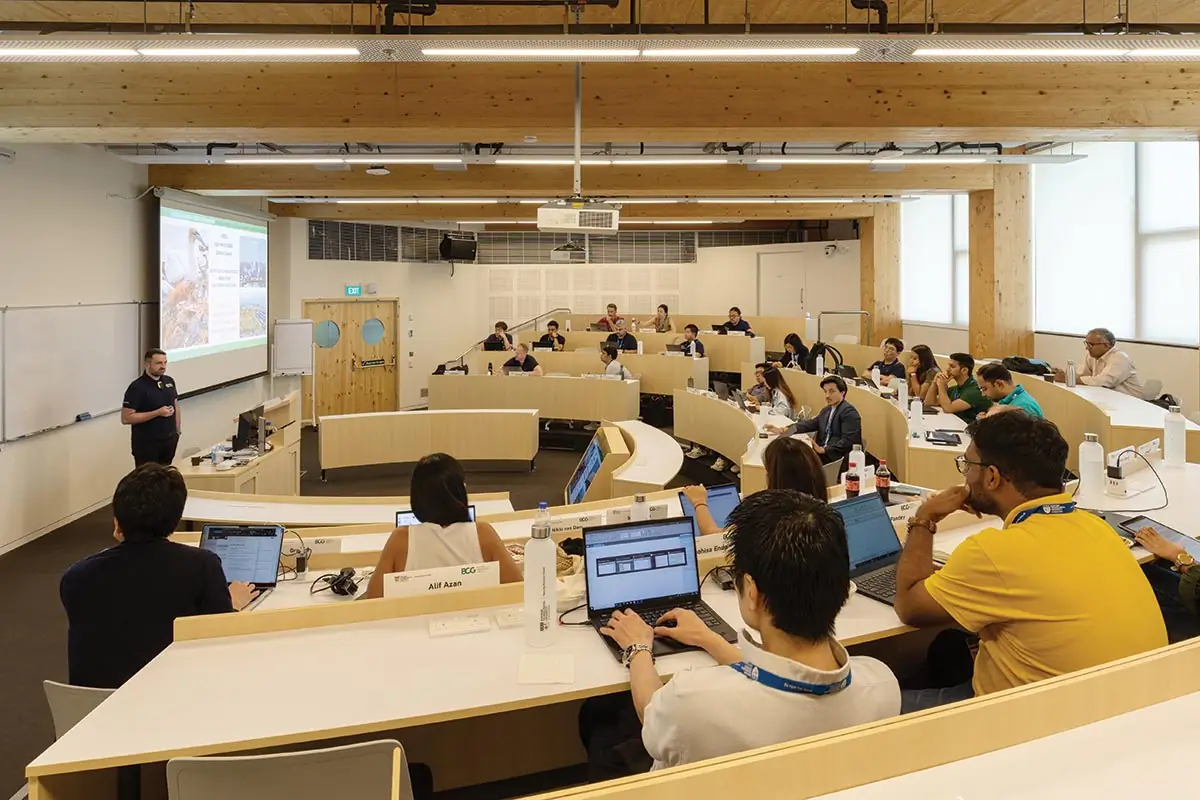
5
Naturally, Singapore’s tropical heat and humidity required consideration, yet Ito was able limit the building’s energy consumption with a variety of passive strategies. For starters, he aligned the building’s long axis with prevailing north–south breezes, which eliminated the need for a mechanical HVAC system in open communal areas. In teaching spaces, offices, and other enclosed places, a Passive Displacement Ventilation system handles the required cooling. Developed at NTU, this technology relies on hot air’s propensity to rise toward the top of the room, where it is cooled by coils filled with cold water. This method necessitated deeper walls to hold equipment, but it uses supplemental energy only to chill the water. Another energy-saving measure was fronting the east and west elevations with thick, coffered facades. Measuring 5 feet deep, the crosshatch of horizontal and vertical fins shields the interior from direct sunlight, lessening heat gain. These innovations helped the project land a Green Mark Platinum designation from Singapore’s government.
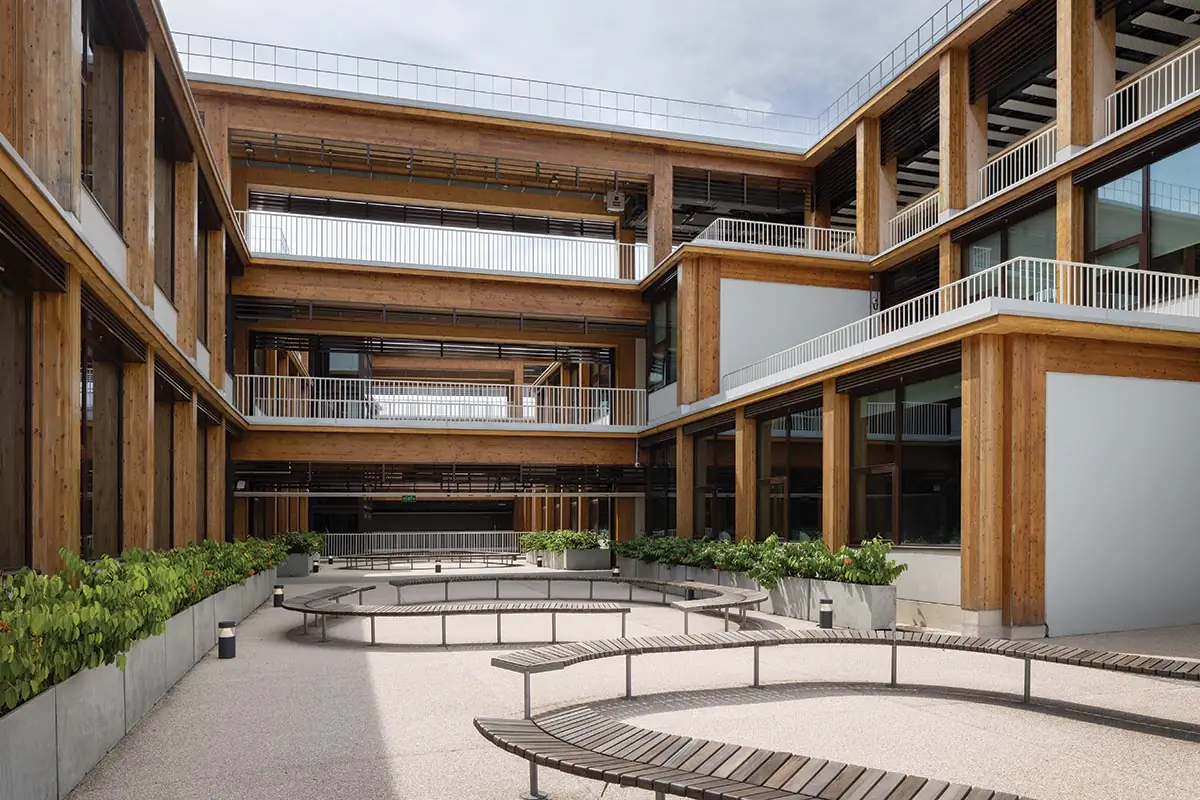
6
The rooftop features planted terraces (6), while vertical shafts bring daylight deep into the building (7). Photos © Kai Nakamura
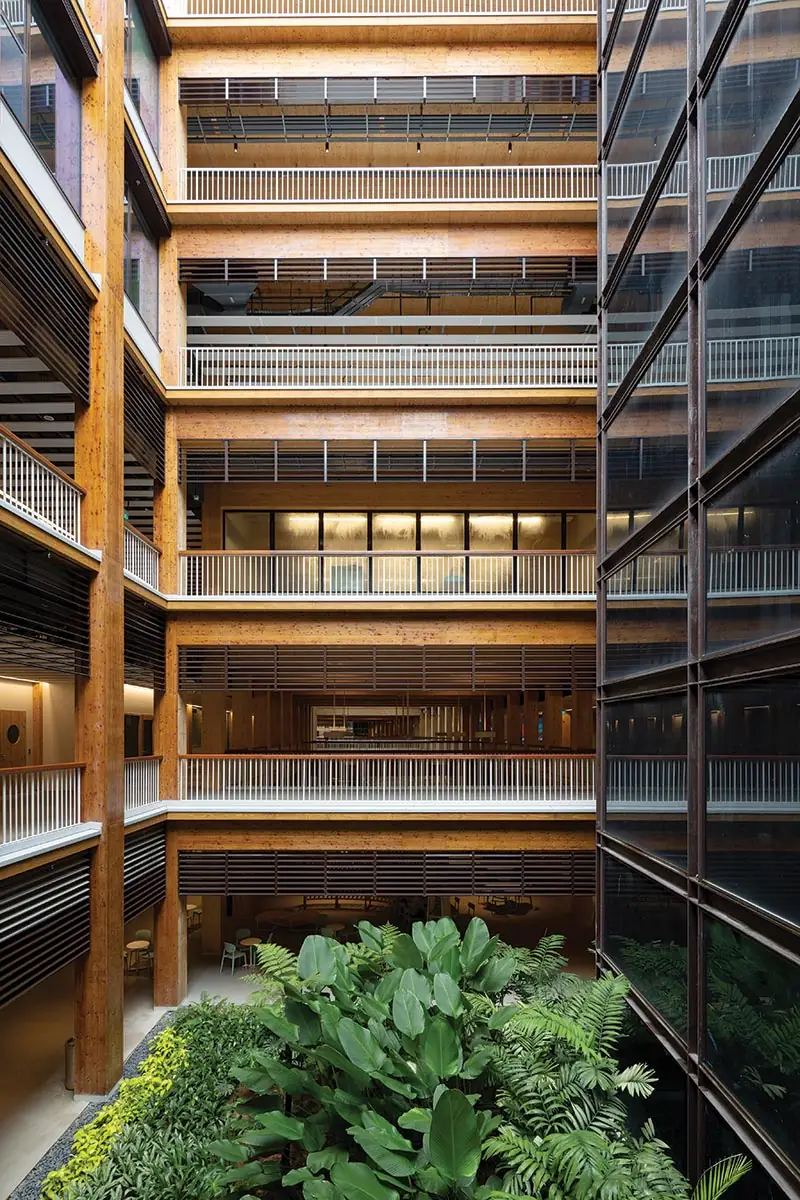
7
Per the energy-conscious client’s request, timber construction was utilized wherever possible—a pioneering move toward reducing the school’s carbon footprint. “NTU always wants to do the new, new thing,” explains Li. Even the custom furnishings that Tokyo-based Fujimori Atelier designed for the ground-floor lounges are spruce. Aside from the concrete emergency stair and elevator cores, the structure features an enormous spruce-glulam frame, with wood sheets instead of beams spanning the short axis, a strategy that adds stiffness while reducing floor depth. Produced at an Austrian factory, the prefab elements were milled by computer, affixed with aluminum joint plates, and then shipped to Singapore, where they were assembled on-site, cutting down on both construction time and cost. Curving the whole assemblage enabled the architect’s goal of softening the rigid frame’s brawny appearance.
Currently, the NTU Business School is the largest wooden structure in Asia. “Of course, creating such a huge building from timber was a great challenge,” comments Li. “But it also opens a lot of doors for timber construction to come.”
Click plans to enlarge
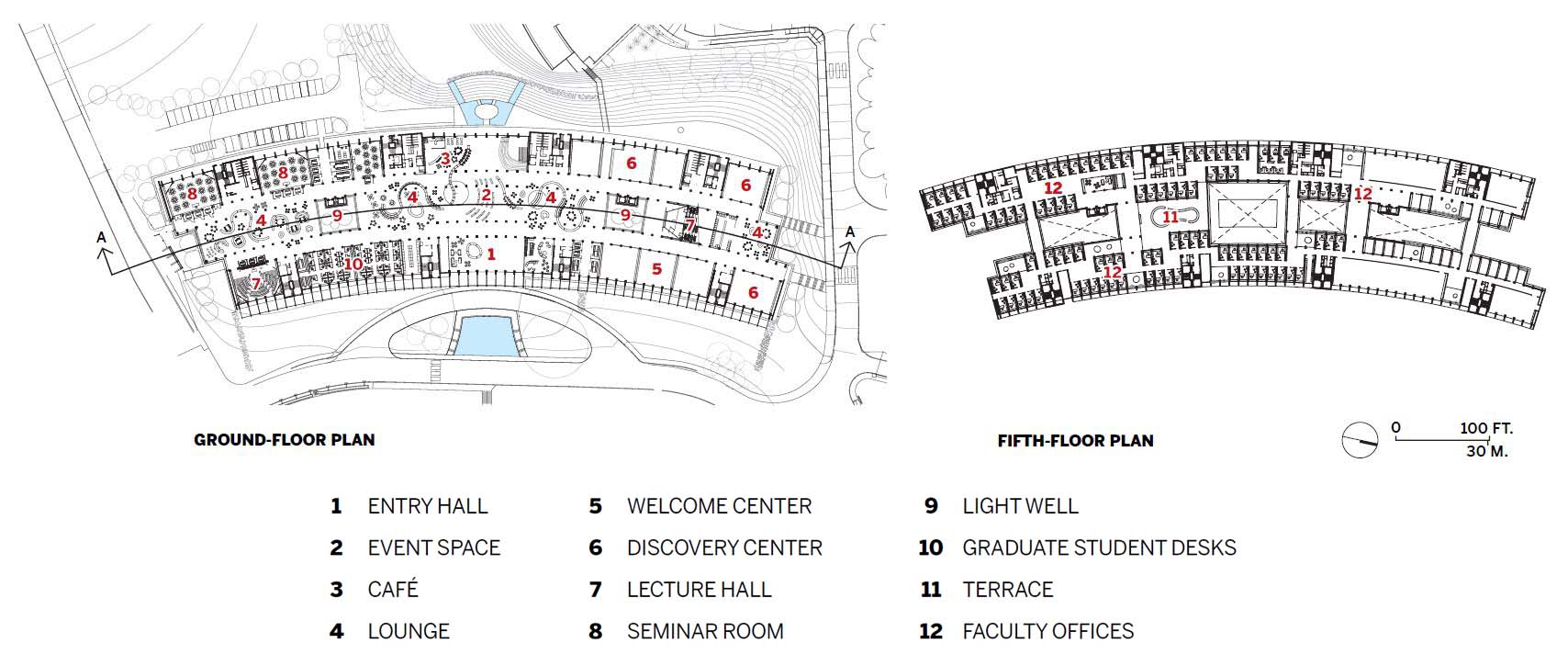
Click section to enlarge

Click drawing to enlarge
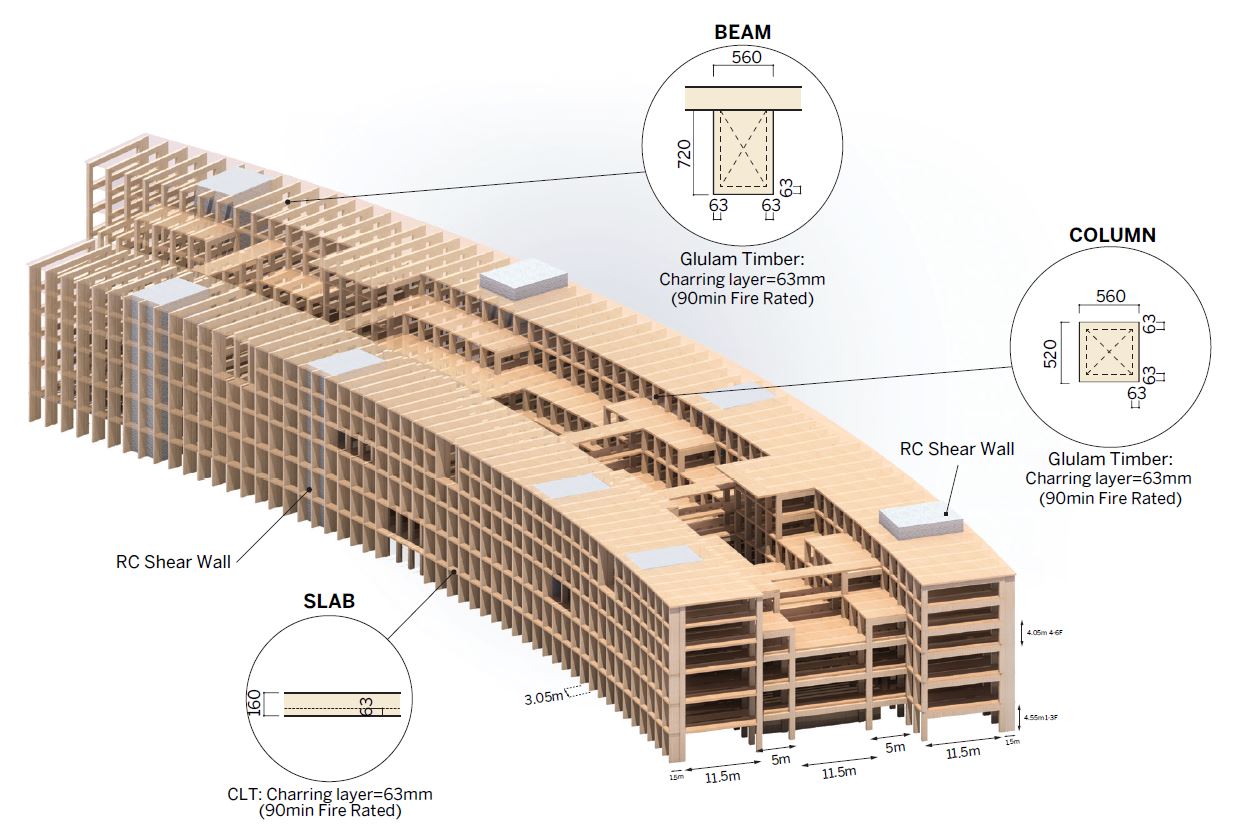
Credits
Architect:
Toyo Ito & Associates, Architects — Toyo Ito, president; Takeo Higashi, chief architect; Yoshitaka Ihara, Mitsuyo Yabuki, senior architects; Julia Li Ka Yee, design lead; Yonosuke Fukuda, Shuichi Kobari, Takayuki Ohara Martinez, Elain Kwong, Joy Hu, design team
Architect of Record:
RSP Architects Planners & Engineers
Engineers:
Aurecon Group (structural); Takenaka Corporation Timber Innovation Department (timber); Squire Mech Pte (m/e/p)
Consultants:
Lighting Planners Associates (lighting); Higini Arau Acustica, DB Acoustics (acoustics); Maruyama Design (signage); STX Landscape Architects (landscape)
Contractors:
Newcon Builders (general); Steel Tech Industries (timber)
Client:
Nanyang Technological University
Size:
437,000 square feet
Cost:
$88 million (construction)
Completion Date:
March 2023
Sources
Structural System:
Weihag
Windows:
Jinyue
Cladding:
Jinyue, Robin Village, Stora Enso
Acoustical Surfaces:
Rockwool (ceilings); Saint-Gobain Gyproc (walls)


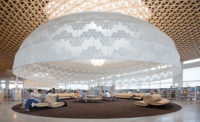
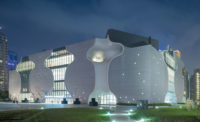
Post a comment to this article
Report Abusive Comment